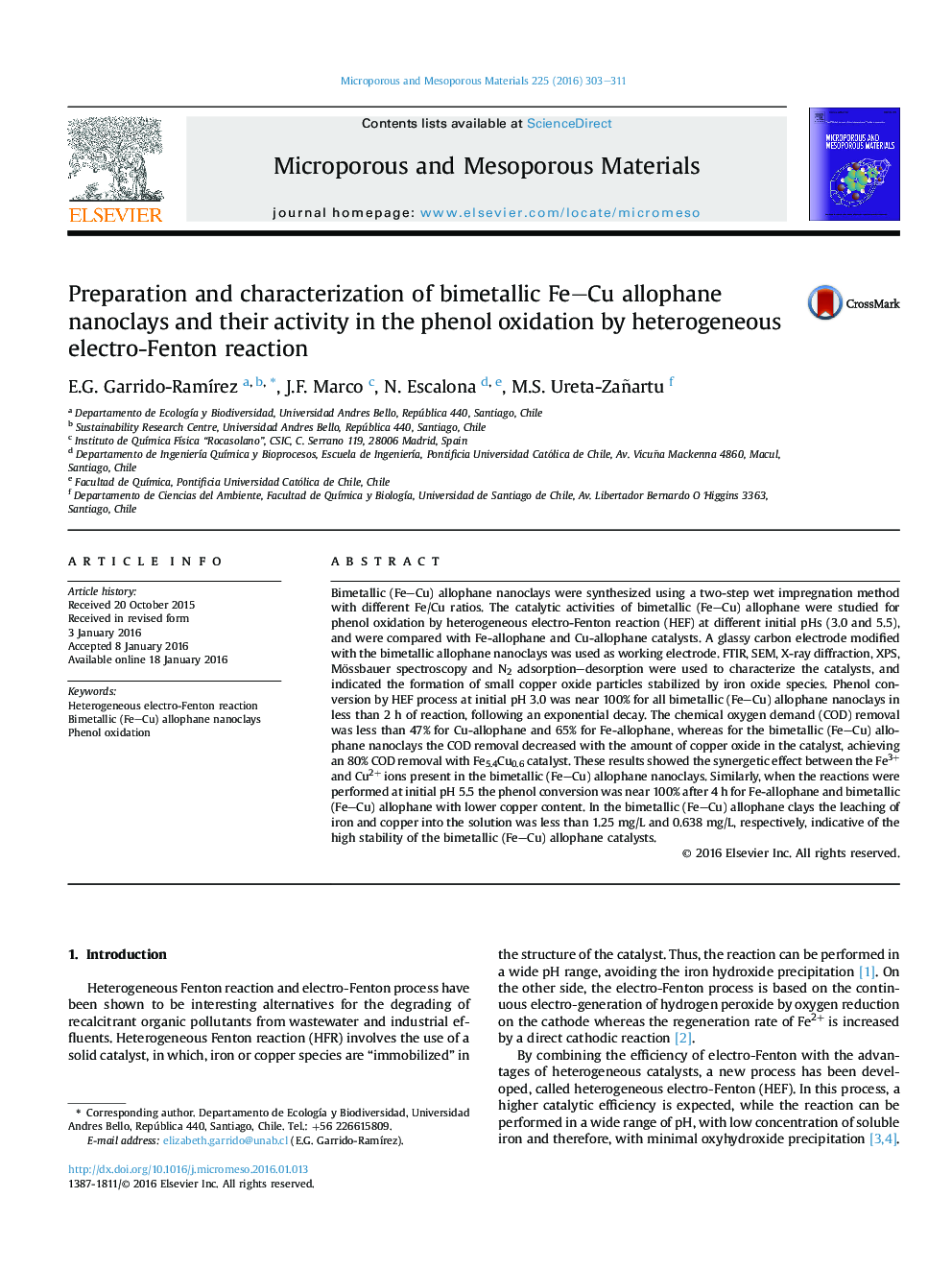| کد مقاله | کد نشریه | سال انتشار | مقاله انگلیسی | نسخه تمام متن |
|---|---|---|---|---|
| 72094 | 49011 | 2016 | 9 صفحه PDF | دانلود رایگان |

• Bimetallic (Fe–Cu) allophane nanoclays with different Fe/Cu ratios were synthesized.
• FTIR, SEM, XRD, XPS and Mössbauer spectroscopy characterized the solid catalysts.
• Formation of small copper oxide particles stabilized by iron species was suggested.
• Phenol oxidation by heterogeneous electro-Fenton reaction was studied.
• Bimetallic nanoclays improve the phenol oxidation due to synergetic effect.
Bimetallic (Fe–Cu) allophane nanoclays were synthesized using a two-step wet impregnation method with different Fe/Cu ratios. The catalytic activities of bimetallic (Fe–Cu) allophane were studied for phenol oxidation by heterogeneous electro-Fenton reaction (HEF) at different initial pHs (3.0 and 5.5), and were compared with Fe-allophane and Cu-allophane catalysts. A glassy carbon electrode modified with the bimetallic allophane nanoclays was used as working electrode. FTIR, SEM, X-ray diffraction, XPS, Mössbauer spectroscopy and N2 adsorption–desorption were used to characterize the catalysts, and indicated the formation of small copper oxide particles stabilized by iron oxide species. Phenol conversion by HEF process at initial pH 3.0 was near 100% for all bimetallic (Fe–Cu) allophane nanoclays in less than 2 h of reaction, following an exponential decay. The chemical oxygen demand (COD) removal was less than 47% for Cu-allophane and 65% for Fe-allophane, whereas for the bimetallic (Fe–Cu) allophane nanoclays the COD removal decreased with the amount of copper oxide in the catalyst, achieving an 80% COD removal with Fe5.4Cu0.6 catalyst. These results showed the synergetic effect between the Fe3+ and Cu2+ ions present in the bimetallic (Fe–Cu) allophane nanoclays. Similarly, when the reactions were performed at initial pH 5.5 the phenol conversion was near 100% after 4 h for Fe-allophane and bimetallic (Fe–Cu) allophane with lower copper content. In the bimetallic (Fe–Cu) allophane clays the leaching of iron and copper into the solution was less than 1.25 mg/L and 0.638 mg/L, respectively, indicative of the high stability of the bimetallic (Fe–Cu) allophane catalysts.
Figure optionsDownload as PowerPoint slide
Journal: Microporous and Mesoporous Materials - Volume 225, 1 May 2016, Pages 303–311